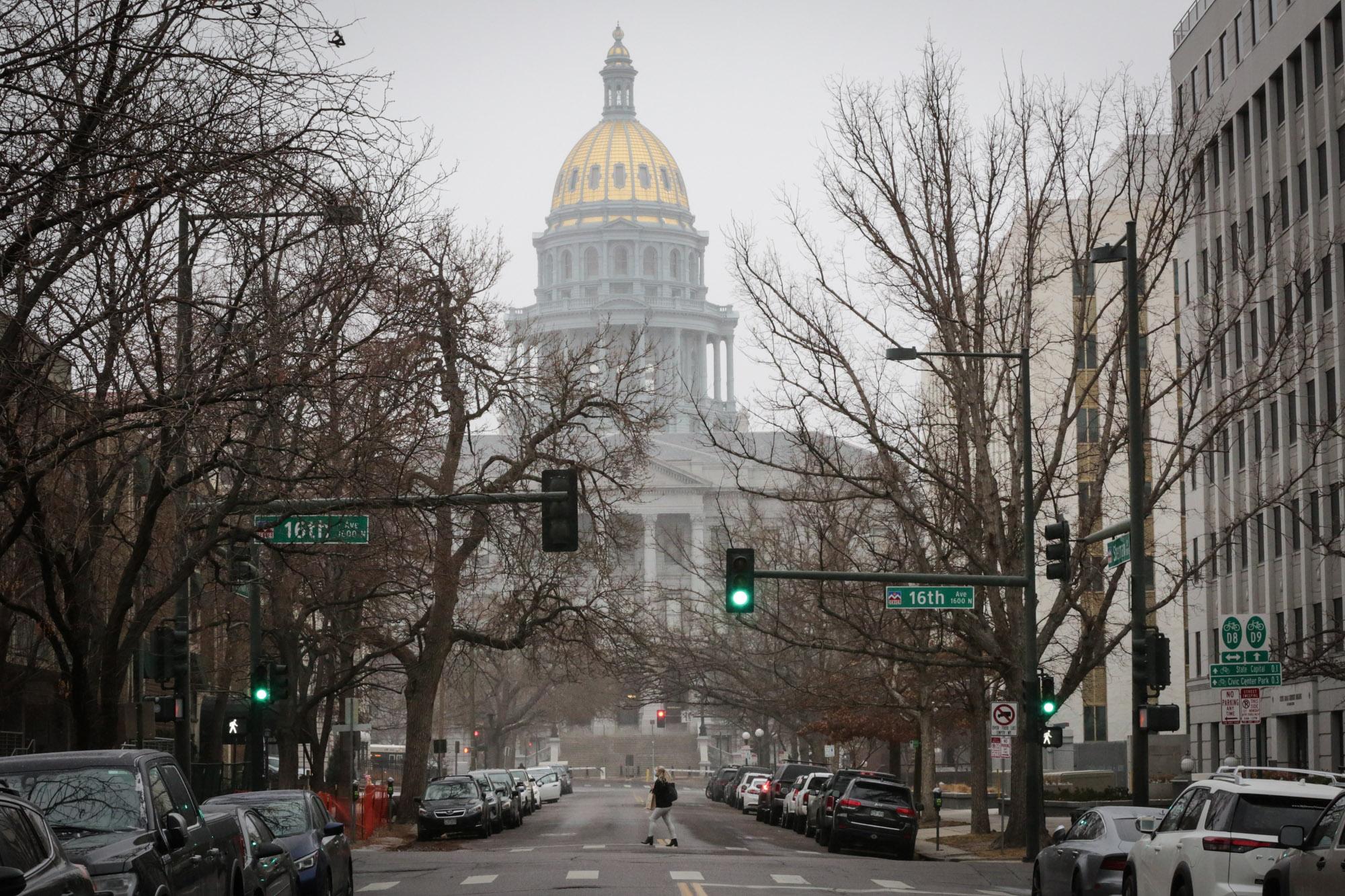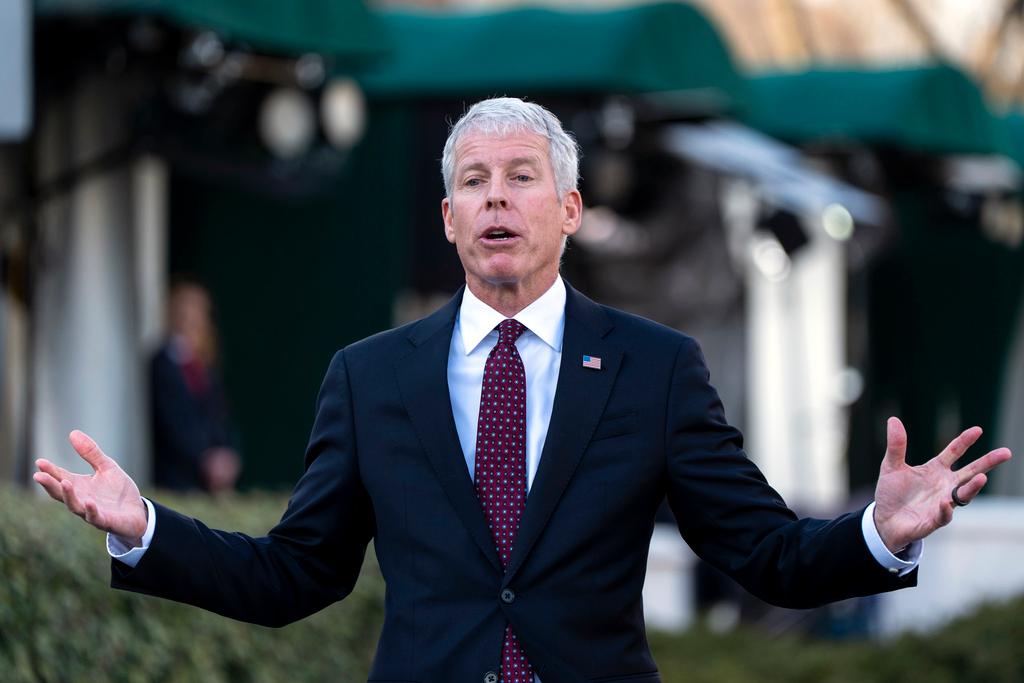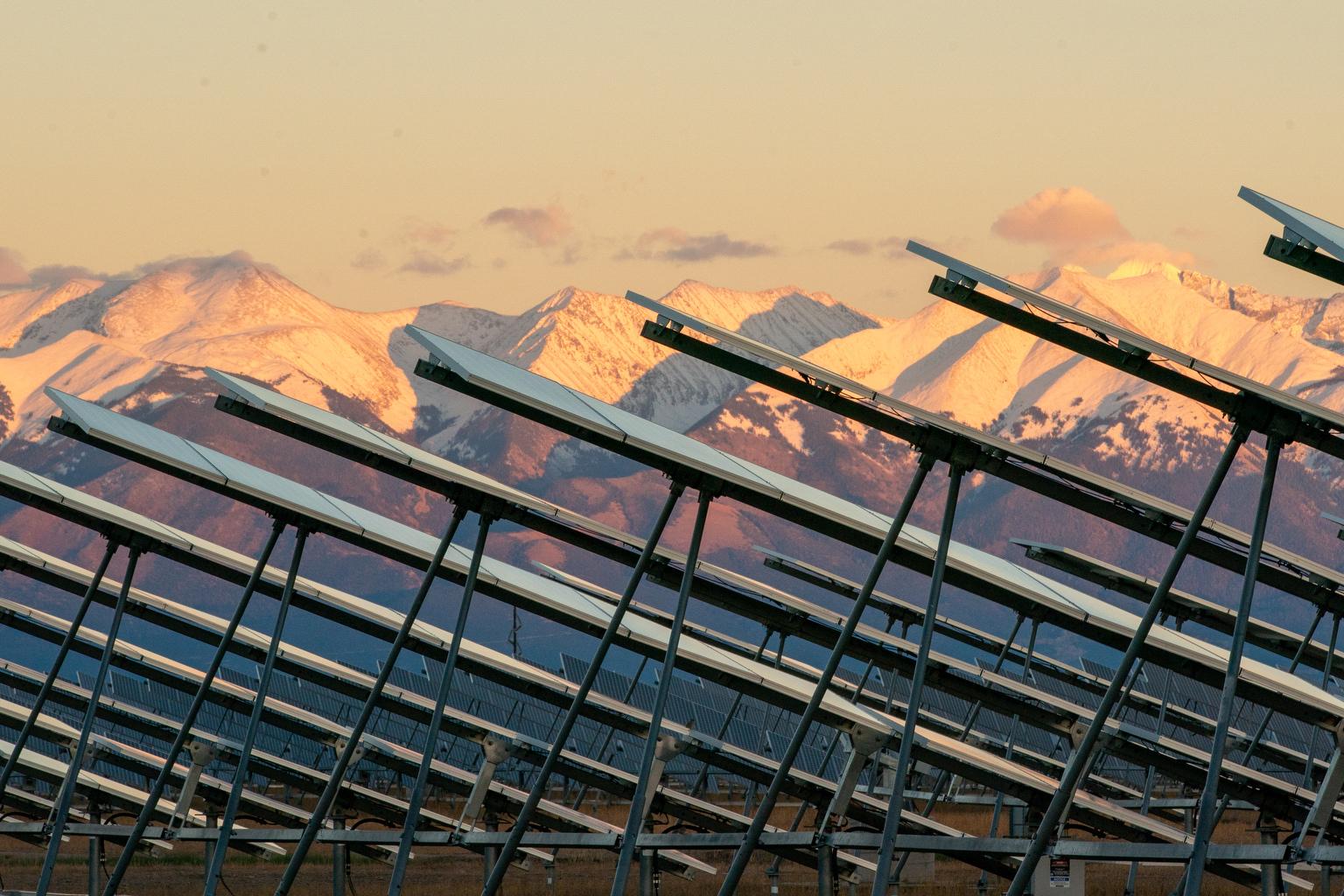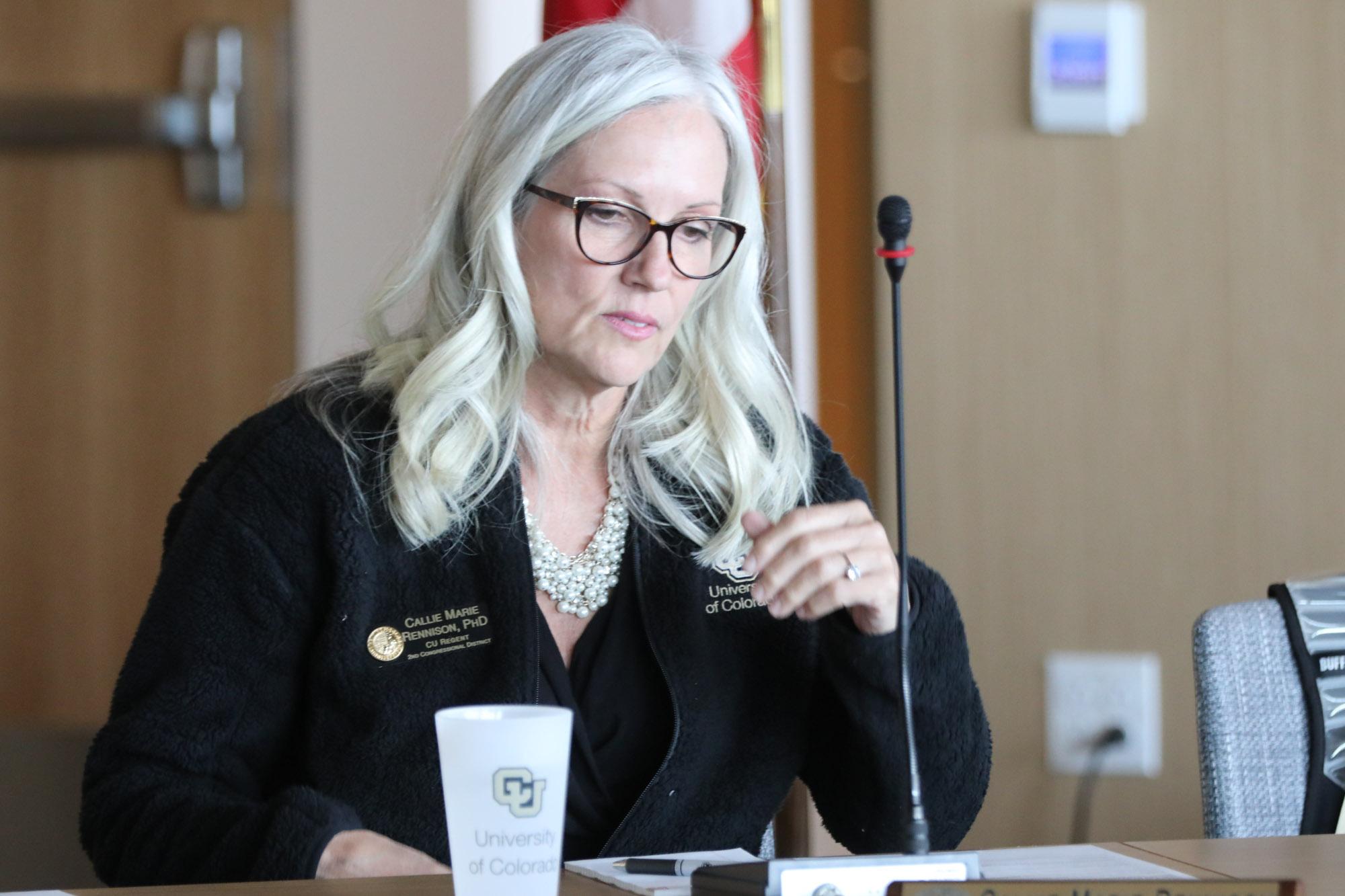
Colorado lawmakers in the coming weeks are set to approve a $36.4 billion budget, including $16 billion that state lawmakers control directly.
The state has more money to work with this year because of a strong economy with healthy tax revenues and a massive influx of federal COVID relief. But spending that money has raised questions about what the state prioritizes and how it should prepare for the post-pandemic period.
“After two incredibly painful and challenging years, the arrival of a global pandemic and the crisis that ensued … we are bringing Colorado back strong,” said state Rep. Julie McCluskie, the Democrat who chairs the Joint Budget Committee.
It’s the largest budget ever, marking a full recovery for the state’s finances from the pandemic.
The budget dedicates substantial new funds to air-quality programs, schools, and construction projects. It also includes a 3 percent raise for state employees, a 2 percent raise for contracted nursing home employees, and temporary discounts on fees for residents and businesses.
Republican Minority Leader Hugh McKean said that Democrats had failed to stay “laser-focused” on saving people money, as Gov. Jared Polis has promised to do.
“It’s a lot more like a laser light show, with lasers going everywhere,” he said.
Here are six issues lawmakers are dealing with.
Responding to air pollution
The federal government has placed large swaths of Colorado on notice about atmospheric pollution. In response, budget writers proposed a $43.4 million “air quality transformation” package.
About $18 million will pay for new air quality monitoring equipment and a rebate program to subsidize electric lawn equipment. Another $26 million will go toward the state’s program to track and regulate emissions from oil and gas facilities and other sources. The funding will pay for dozens of new state employees for the air quality program.
With the new air quality package, the state health department will see one of the largest proportional budget increases of any department. But, for now, that $43 million will be paid for by one-time federal funding — leaving the state to figure out a replacement source in about two years.
Separately, lawmakers are debating a climate bill, but Democrats have backed off a plan to ban gas-powered lawn equipment in parts of the state.
More money for law enforcement, relief for parolees
This budget begins a multi-year expansion of the Colorado Bureau of Investigation.
With this budget, the CBI could get $7 million and 47 new full-time employees. Over the next three years, that could grow to more than 100 new employees. In total, the bureau could see its budget total and its staff grow by nearly a third, to about 300.
The budget also includes about $5 million in new money for security at the Capitol, including a new X-ray machine and overtime pay for security.
Meanwhile, the budget offers some relief for people serving time in the community corrections system, including those on parole or probation. These people currently pay “subsistence payments” of $17 a day if they are in a residential facility. The state would instead pay $16.5 million to make up the difference for the facilities.
“We are having issues obviously collecting these fees from offenders, but also offenders are leaving (corrections) in debt,” said state Rep. Leslie Herod, a Democratic member of the Joint Budget Committee.
Democrats also have proposed a $113 million public safety plan with federal money.
But one law-enforcement priority may not get more funding: The state attorney general’s office had asked for an investigator for its patterns and practices unit, which looks into bad behavior by police departments and others.
The Joint Budget Committee didn’t see any evidence that the office had made full use of its last funding increase, Herod said.
“There was no guarantee that this would actually expand patterns and practices investigations,” Herod said.
State Rep. Adrienne Benavidez, a Democrat, pushed back, pointing out that “significant requests have been made from the public” for investigations like the one into the Aurora Police Department.
New money for education
The state’s K-12 education spending would see significant growth of about 7.6 percent.
The additional funding reduces the “budget stabilization factor” — basically, the amount by which the state is falling short of its school funding obligations under the state constitution — from a shortfall of about $500 million to about $321 million.
Budget writers originally talked about eliminating the “BS” factor altogether over a couple years, but inflation now makes that look unrealistic.
The state also could spend $93 million of new money on special education — an increase of more than 40 percent per student.
For the first time, the state budget includes money for the new Department of Early Childhood Education, which will support the eventual launch of universal preschool.
Higher education also would see a boost of about 11 percent from the general fund. That comes with an assumption that tuition will increase by no more than 2 percent at most institutions for in-state students. Incoming first-year students at CU Boulder might see a 4.3 percent increase, but then have their tuition held flat.
“I won’t say we’re doing great yet, but we’re making progress,” Herod said.
Budget writers also are expecting hundreds of millions of dollars in higher costs for health services. The federal government has been paying a higher-than-usual amount for Medicaid patients, which the state will have to replace when it expires. The budget also anticipates that more people will use behavioral health and substance use treatment services.
New projects and renovations
The budget includes nearly $500 million for construction and renovations, including:
- $47 million for outdoor recreation and related areas, including Sweetwater Lake, the newest state park
- $44 million to rebuild the Robinson Theater at Colorado Mesa University
- $38 million for Colorado State University’s Clark building renovation and expansion
- $27 million to renovate the University of Colorado-Boulder’s Hellems Arts and Sciences building and outdoor theater
- $23 million for the Community of College of Denver’s Boulder Creek Building renovation and expansion on the Auraria campus.
The pandemic hangover
State lawmakers are bracing for the economic after-effects of the pandemic.
One of the biggest single items is a plan to spend $600 million to replenish the state’s unemployment program.
That money will pay off about half of what the state owes the federal government after the state had to pay out enormous unemployment benefits. Without it, businesses would face steeper costs to pay the debt instead. The money would come from state spending, but could ultimately be backfilled by federal stimulus dollars.
The state also is bracing for the end of more federal pandemic support programs.
Changes in Medicaid eligibility have allowed hundreds of thousands more people to remain on the federal health program. But that is set to expire in the near future, which could drive Colorado enrollment in parts of the program down from 1.6 million last year to 1.4 million next year.
Inflation also has affected the budget. For example, the state is preparing to spend $5 million more on printing and related services, an increase of more than 15 percent.
What about TABOR?
The state’s budget has surpassed its pre-pandemic totals, with the general fund growing by about 15 percent compared to the 2019-’20 budget. With that growth in sales taxes, property taxes and more, the state is running up against the limits set by the Taxpayer’s Bill of Rights.
In the upcoming budget year, Colorado is expected to owe about $1.6 billion in refunds to taxpayers in the upcoming budget year. There’s been talk that Democrats could find ways to reduce those refunds, but there’s been little action on that.
“Maybe that conversation comes in this next year,” said McKean, the Republican minority leader. “We’ll be laser focused on that, making sure the people of the state get their money back.”
Sen. Bob Gardner, a Republican, warned that the budget didn’t do enough to prepare for a potential economic downturn, including by relying in some cases on one-time funding.
“You have to believe there’s a cliff out there,” he said.
The budget keeps a reserve of about $2 billion, or about 15 percent of the general fund — the largest reserve in decades, according to the Colorado Fiscal Institute.
The budget was heard on the House floor on Wednesday and will soon go to the Senate. Democrats in the House rejected several dozen amendments from members of both parties, such as a $14 million request for an emergency response helicopter to operate on the Western Slope.
As of 5 p.m., they had passed only one change to the budget — a $2.3 million request by McKean and Democratic Rep. Shannon Bird to raise salaries for state troopers. They would get a 6 percent raise, while state employees generally are getting a 3 percent raise.









